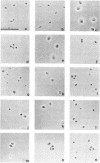Abstract
Morphogenesis of Geodermatophilus strain 22–68 involves two stages, a motile rod (R form) and an irregularly shaped cluster of coccoid cells (C form). A variety of mono- and divalent cations have been found to induce R-form to C-form morphogenesis and to maintain the organism in the C form. Concentration optima for all cations exceeded 100 mM. Results indicated that uptake of cations was accompanied by extrusion of intracellular protons, causing an increase in intracellular pH. A variety of organic amines also induced morphogenesis. Organic amines were taken up in the dissociated free base form, causing the intracellular pH to rise. None of these compounds was utilized as a carbon or nitrogen source.
Full text
PDF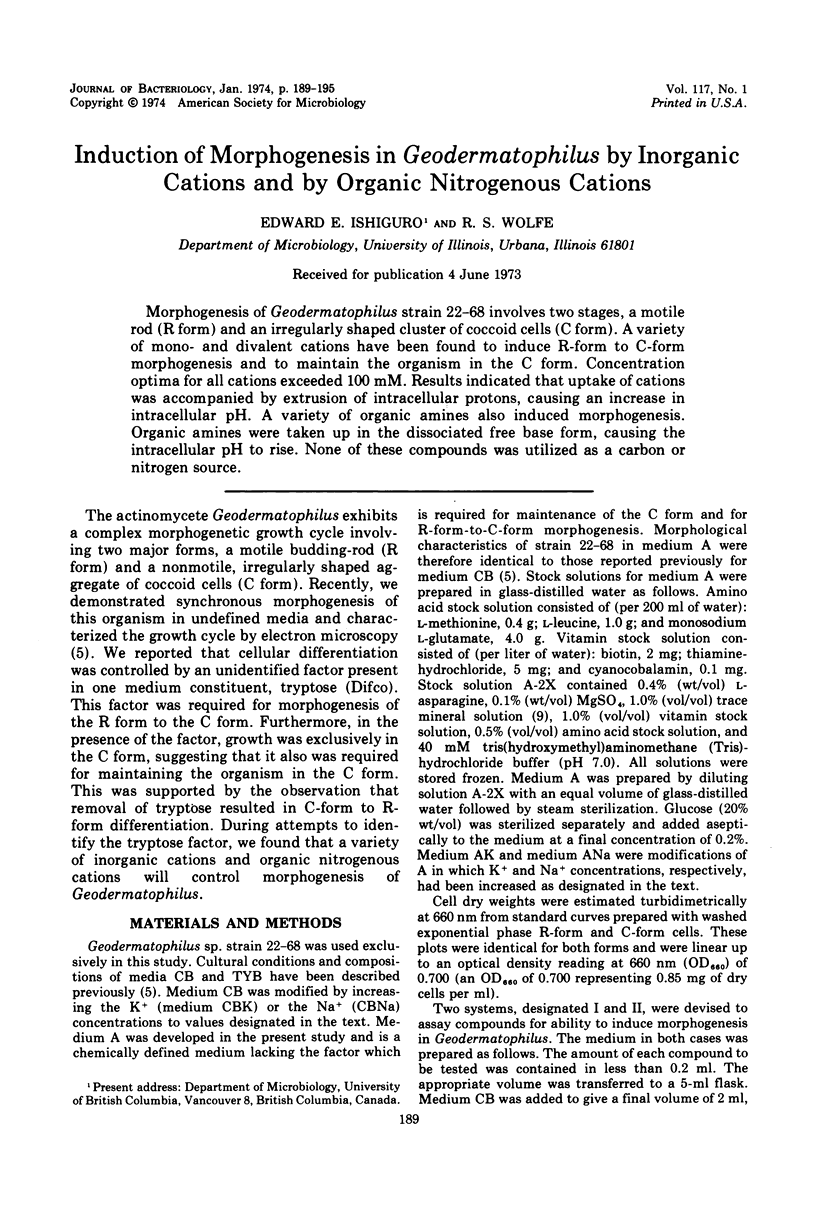
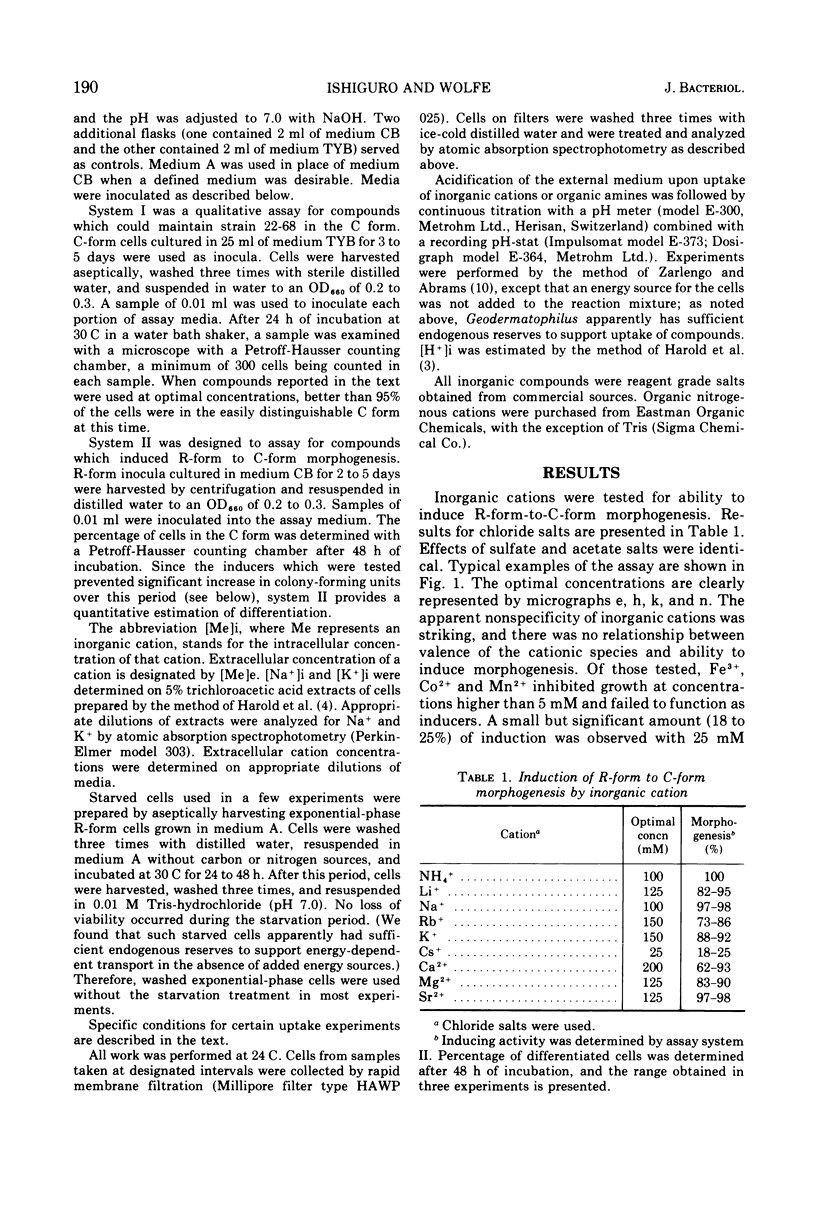

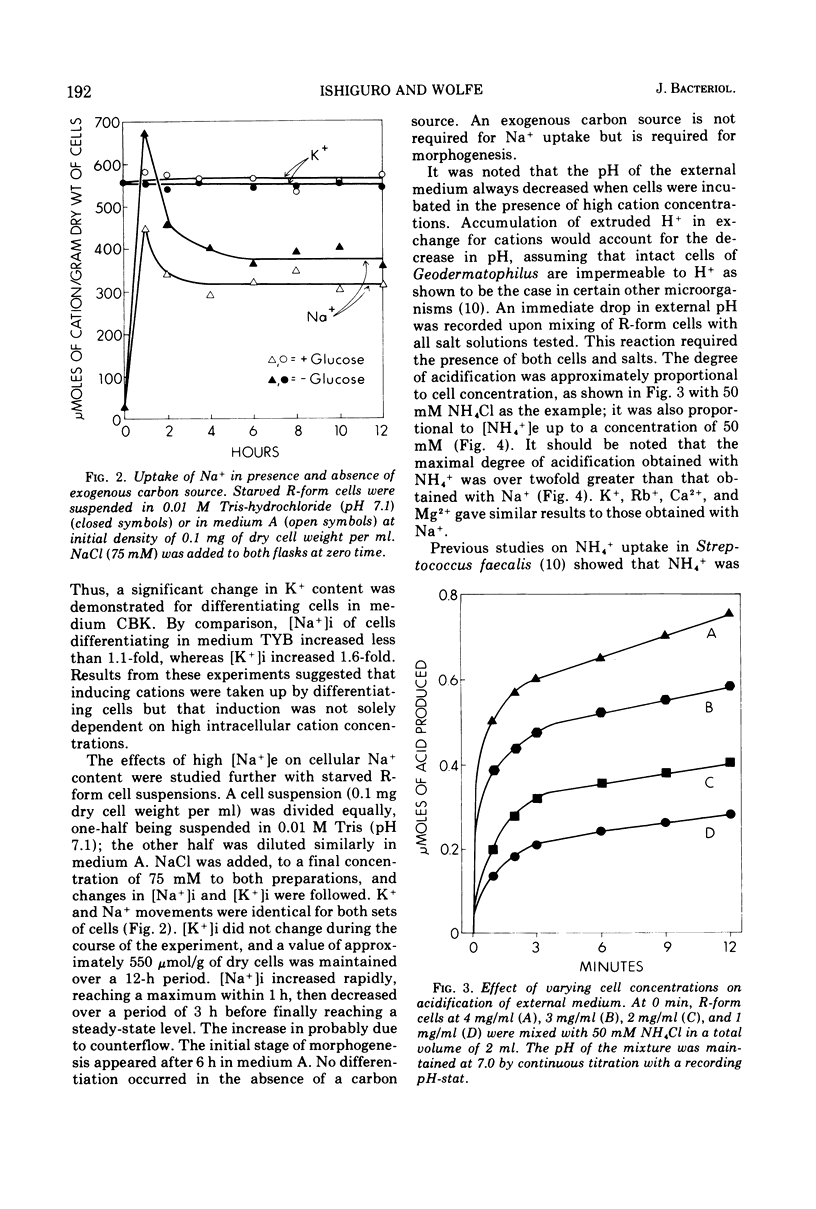
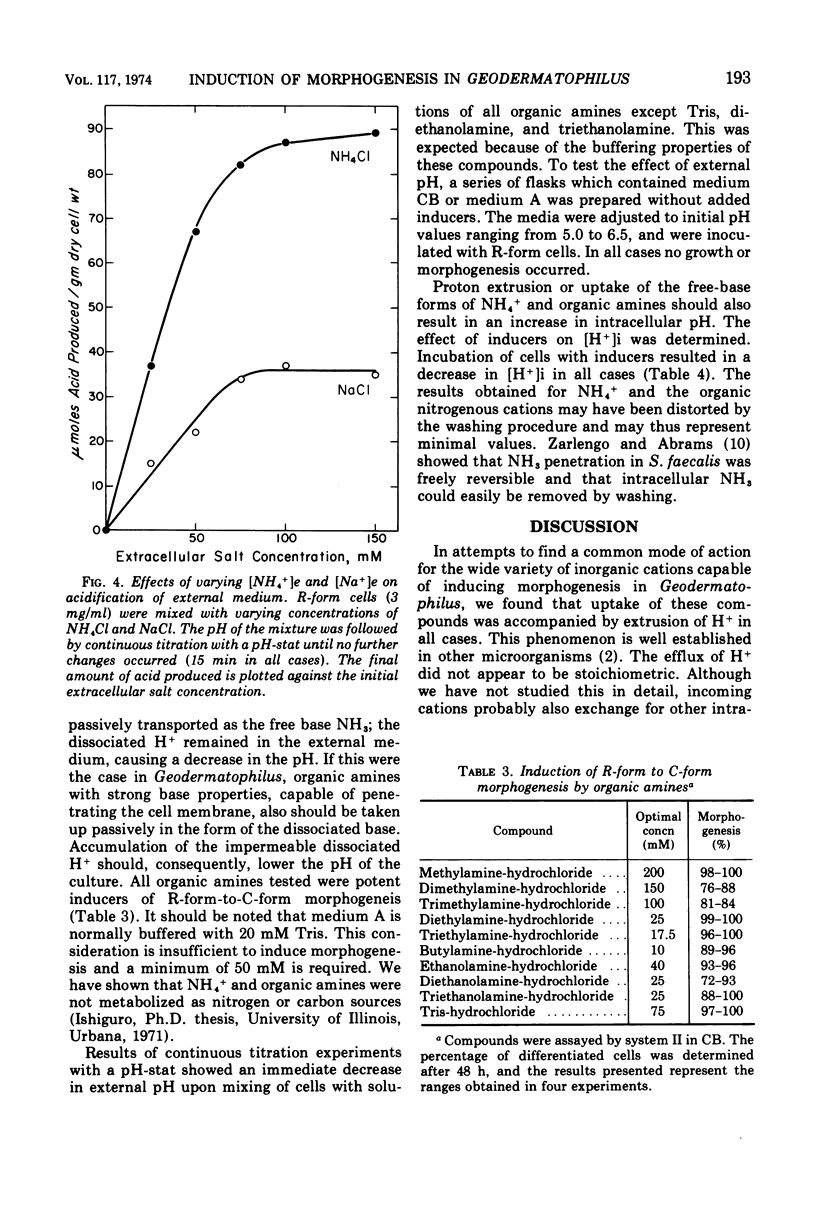
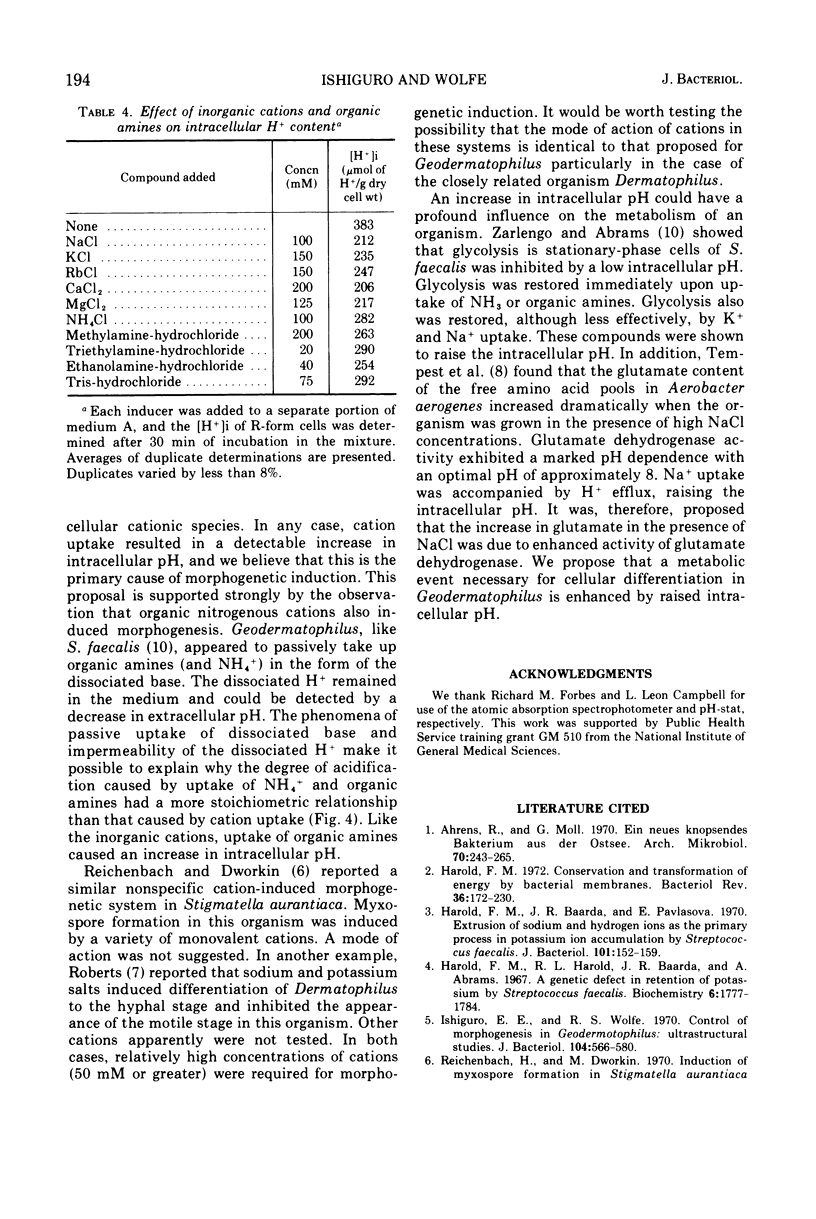
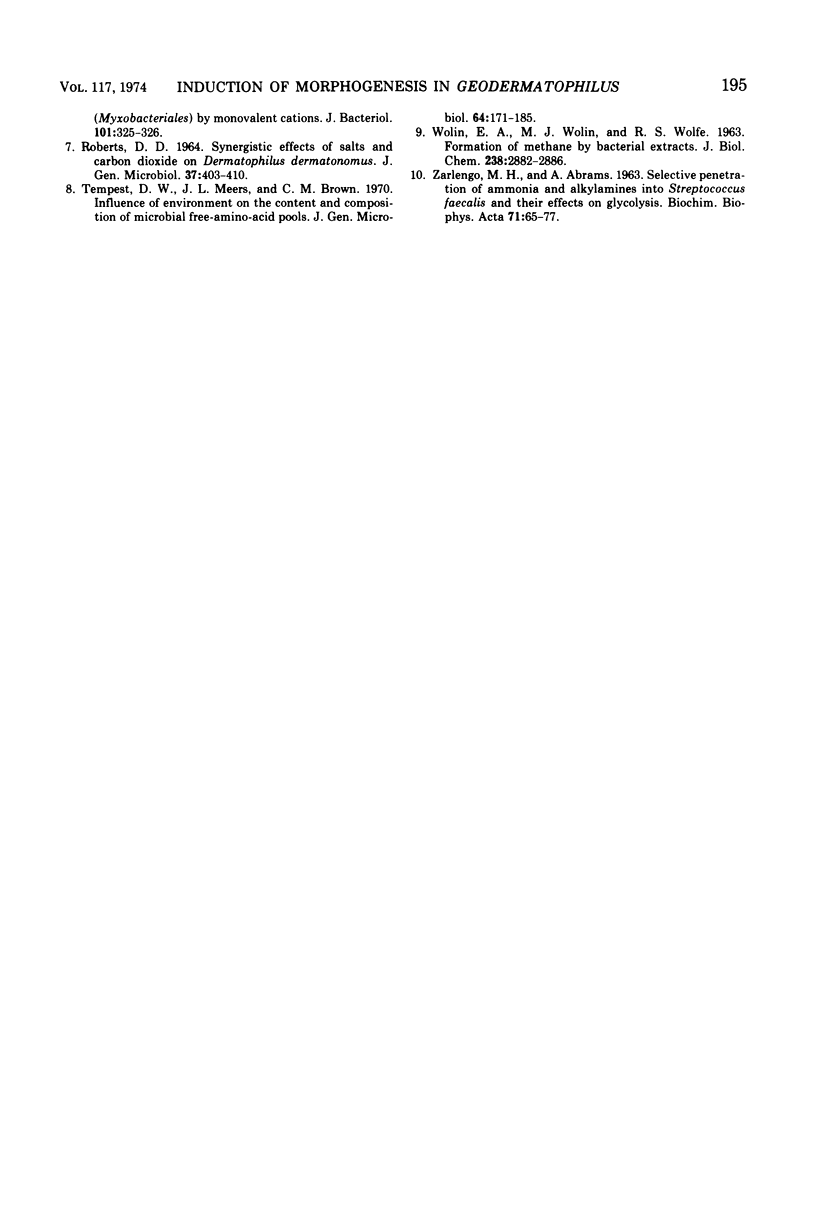
Images in this article
Selected References
These references are in PubMed. This may not be the complete list of references from this article.
- Ahrens R., Moll G. Ein neues knospendes Bakterium aus der Ostee. Arch Mikrobiol. 1970;70(3):243–265. [PubMed] [Google Scholar]
- Harold F. M., Baarda J. R., Pavlasova E. Extrusion of sodium and hydrogen ions as the primary process in potassium ion accumulation by Streptococcus faecalis. J Bacteriol. 1970 Jan;101(1):152–159. doi: 10.1128/jb.101.1.152-159.1970. [DOI] [PMC free article] [PubMed] [Google Scholar]
- Harold F. M. Conservation and transformation of energy by bacterial membranes. Bacteriol Rev. 1972 Jun;36(2):172–230. doi: 10.1128/br.36.2.172-230.1972. [DOI] [PMC free article] [PubMed] [Google Scholar]
- Harold F. M., Harold R. L., Baarda J. R., Abrams A. A genetic defect in retention of potassium by Streptococcus faecalis. Biochemistry. 1967 Jun;6(6):1777–1784. doi: 10.1021/bi00858a028. [DOI] [PubMed] [Google Scholar]
- Ishiguro E. E., Wolfe R. S. Control of morphogenesis in Geodermatophilus: ultrastructural studies. J Bacteriol. 1970 Oct;104(1):566–580. doi: 10.1128/jb.104.1.566-580.1970. [DOI] [PMC free article] [PubMed] [Google Scholar]
- ROBERTS D. S. SYNERGISTIC EFFECTS OF SALTS AND CARBON DIOXIDE ON DERMATOPHILUS DERMATONOMUS. J Gen Microbiol. 1964 Dec;37:403–410. doi: 10.1099/00221287-37-3-403. [DOI] [PubMed] [Google Scholar]
- Tempest D. W., Meers J. L., Brown C. M. Influence of environment on the content and composition of microbial free amino acid pools. J Gen Microbiol. 1970 Dec;64(2):171–185. doi: 10.1099/00221287-64-2-171. [DOI] [PubMed] [Google Scholar]
- WOLIN E. A., WOLIN M. J., WOLFE R. S. FORMATION OF METHANE BY BACTERIAL EXTRACTS. J Biol Chem. 1963 Aug;238:2882–2886. [PubMed] [Google Scholar]
- ZARLENGO M., ABRAMS A. Selective penetration of ammonia and alkylamines into Streptococcus fecalis and their effect on glycolysis. Biochim Biophys Acta. 1963 Apr 2;71:65–77. doi: 10.1016/0006-3002(63)90986-7. [DOI] [PubMed] [Google Scholar]



